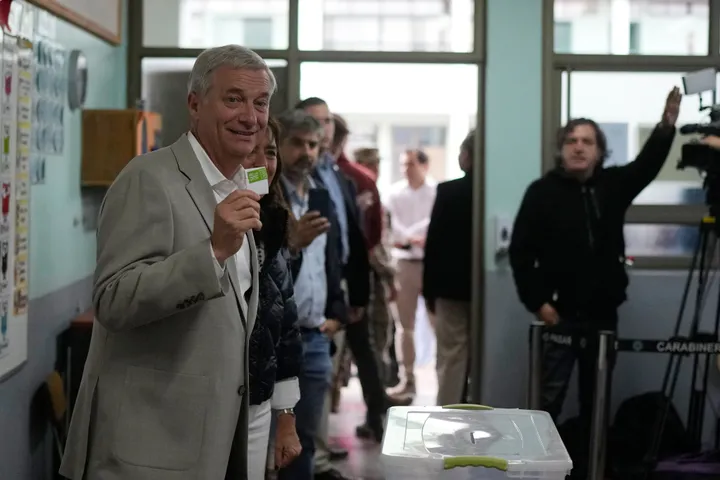In a major scientific breakthrough, researchers at the University of Illinois at Urbana-Champaign have found a way to clean the sensitive mirrors in extreme ultraviolet lithography (EUVL) machines.
The development saves time in the lengthy process of removing these mirrors physically, reducing downtime and boosting the production of advanced microchips.
Professor David N Ruzic, who's working with the Dutch photolithography company ASML, says that after more than a decade of research, he has finally succeeded in finding a technique to remove debris from the machines.
In the experiments conducted on ASML equipment, Ruzic used a plasma to turn debris into gas, which is then sucked out via a pump.
That potentially resolves a major headache for the semiconductor industry, which is in constant search of ways to shrink the size of transistors so advanced microprocessors can be produced smoothly and at lower costs.
The EUVL machines play a central role in the global production of chips, which are used in devices like iPhones and computers.
On any given day, here's how a standard EUVL machine operates: A laser evaporates tiny droplets of molten tin to generate a plasma, which then etches integrated circuits on silicon wafers. But the process generates tin debris and increases the wear and tear of the $200 million-a-piece machine.
“This research will ultimately lead to a higher throughput — more wafers per hour,” says Professor David N Ruzic, who led the years-long research and authored the paper on its outcome.
“You might realise that there’s a roadmap to make these machines more efficient. The tin problem is only going to get worse. So you need to implement a solution to keep productivity up,” he tells TRT World in an interview.
Ruzic is the director of multiple laboratories at the University of Illinois at Urbana-Champaign, including the Center for Plasma Materials Interaction.
The tin removal research, which was published in the Journal of Applied Physics earlier this year, received a special citation (a Scilight) by the American Institute of Physics on September 16.
With the help of Ruzic's research and its practical success, the EUVL machines manufactured by ASML are at the cusp of taking the semiconductor industry to the next level.
But there is a major hiccup the company has to reconcile with: ASML is currently caught in the middle of the US-China chip war.
Washington has blocked ASML from selling the machines to Shanghai-based Semiconductor Manufacturing International Corporation (SMIC), one of the world’s largest semiconductor foundries or fabs. ASML is likely to face a loss of $2 billion in revenues because of the ban.
EUVL machines are imperative for the production of chips on 5 nanometer (nm) or more advanced nodes — and they keep Moore's Law alive. Without them, Chinese firms would be years behind Western competitors in deploying cutting-edge technology.
ASML introduced its EUVL machines — successors to DUV equipment — in 2019. ASML, which posted annual revenue of close to $19 billion last year, controls the entire EUV lithography market.
That minuscule danger
Lithography is a process of printing images developed in the 18th century. Modern lithography, as applied in the semiconductor industry, works on the same principle: a light source imprints a blueprint of a semiconductor on a silicon wafer.
But there’s a catch. The light source in EUVL machines has a wavelength of 13.5 nm. The human eye can detect wavelengths of between 380 nm and 700 nm, according to NASA.
At a 13.5 wavelength — close to what the X-ray emits — light gets absorbed by almost everything. In EUVL machines, a system of multi-layered mirrors, which only a few companies such as the German optic-maker Zeiss can produce, reflects and transfers that light onto a wafer.
Even then, the reflectivity of the mirrors is under 70 percent. And debris from the blasted tin gets accumulated on them over time and reduces their performance, requiring regular replacement.
A contaminant measuring 1 nm (a DNA double helix is approximately 10 nm in width) can take down a mirror's ability to reflect by 10 percent.
Professor Ruzic says over the years, ASML has deployed various techniques to use the mirror for longer durations.
“Every year, they are getting better at it. When they started, the mirrors were replaced once a week, then every three months, and now it’s done maybe once a year.”
ASML has also made the replacement and cleaning process easier and more efficient, he says. Previously, during overhauls, “machines used to be down for two weeks, now they are down for maybe two shifts.”
For a $200 million piece of equipment, every minute counts as every tick of the clock translate into the number of chips produced.
ASML is working with other experts to find solutions for the same problem. Whether Professor Ruzic’s method gets incorporated in the next generation of EUVL equipment depends on its cost-effectiveness.
“I have been around long enough to realise that you might have the best idea but it won’t be implemented if it doesn’t make business sense.”
























